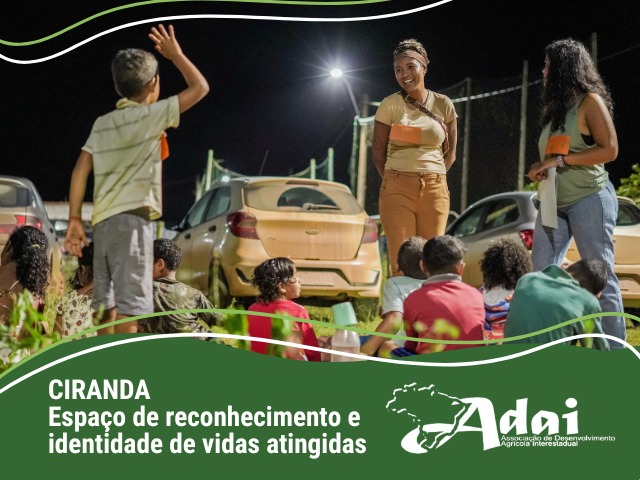Ciranda: a space for the recognition and identity of affected lives

The technical advisory spaces for those affected in Espírito Santo include children and young people, who need to be listened to and welcomed in the process of fighting for reparations. These moments require the use of ciranda.
Verilucy Brito, a pedagogue from the Childhood and Youth Pedagogical Supervision Team of the Technical Advisory Body of the Affected People of Espírito Santo, highlights the origin and importance of the movement: “The ciranda comes from social movements, because of the need for women and those responsible for children to participate in meeting spaces, as well as being a safe space for children, where they also have access to political training,” she says.
For the people affected by the Mariana dam collapse in 2015, the project contributes to this public process. “The ciranda has the role of making children and young people recognize themselves as people who have been affected, so that they also understand what the disaster was, what the mud has changed in their lives and that this identity of being affected is an identity of struggle,” Verilucy adds.
Training spaces for technical assistance to those affected
What is it to be young, what is childhood, what is youth? During the month of May 2023, training processes on ciranda were carried out with part of Adai’s technical advisory team in Espírito Santo.
Jussara Trierveiler, Pedagogue of the Childhood and Youth Pedagogical Supervision Team of the Technical Advisory Body of the Affected People of Espírito Santo, details the space: “This demand on childhood and youth was already in the work plan, and now it has become more important due to the creation of the Affected People’s Groups (Grupos de Atingidos e Atingidas – GAAs). Children and young people are coming to the meetings and we have to work with them too. What can we do with them so that they also recognize themselves as affected?” she says.
The council builds the ciranda space for the children, but this work also involves the whole community. It’s important for them to have a space where they can talk, build and debate about the issues that the adults are debating in plenary, in a more playful and didactic way.
Jussara talks about the next steps in the process: “We’re holding these training sessions so that the mobilizers and managers can take this debate to the community and get them to take part in it. At first, the aim of the training is to work on the ciranda, how to have cirandas within the GAAs, thematic seminars and dialog circles. Then we’re going to build bigger, more theoretical trainings,” she concludes.
Ciranda is a tool and a right for children and young people. Ensuring recognition and listening to their demands and perceptions means fighting for full and fair reparations.
Production: Communication Collective, ATI of Adai in Espírito Santo
Collaboration: Childhood and Youth Pedagogical Supervision Team, ATI of Adai in Espírito Santo

